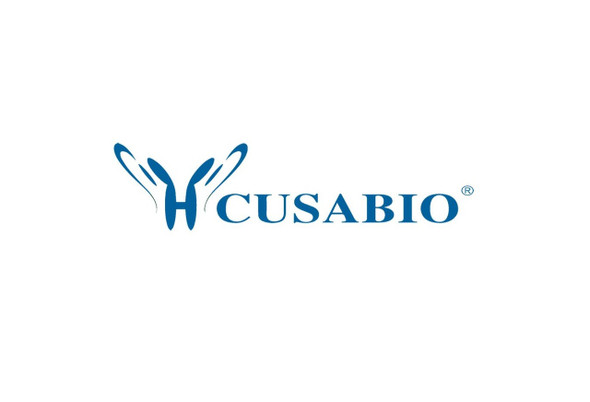Cusabio Human Recombinants
Recombinant Human E3 ubiquitin-protein ligase RFWD2 (RFWD2) | CSB-CF822821HU
- SKU:
- CSB-CF822821HU
- Availability:
- 18 - 23 Working Days
Description
Recombinant Human E3 ubiquitin-protein ligase RFWD2 (RFWD2) | CSB-CF822821HU | Cusabio
Alternative Name(s): Constitutive photomorphogenesis protein 1 homolog Short name: hCOP1 RING finger and WD repeat domain protein 2 RING finger protein 200
Gene Names: RFWD2
Research Areas: Epigenetics and Nuclear Signaling
Organism: Homo sapiens (Human)
AA Sequence: MSGSRQAGSGSAGTSPGSSAASSVTSASSSLSSSPSPPSVAVSAAALVSGGVAQAAGSGGLGGPVRPVLVAPAVSGSGGGAVSTGLSRHSCAARPSAGVGGSSSSLGSGSRKRPLLAPLCNGLINSYEDKSNDFVCPICFDMIEEAYMTKCGHSFCYKCIHQSLEDNNRCPKCNYVVDNIDHLYPNFLVNELILKQKQRFEEKRFKLDHSVSSTNGHRWQIFQDWLGTDQDNLDLANVNLMLELLVQKKKQLEAESHAAQLQILMEFLKVARRNKREQLEQIQKELSVLEEDIKRVEEMSGLYSPVSEDSTVPQFEAPSPSHSSIIDSTEYSQPPGFSGSSQTKKQPWYNSTLASRRKRLTAHFEDLEQCYFSTRMSRISDDSRTASQLDEFQECLSKFTRYNSVRPLATLSYASDLYNGSSIVSSIEFDRDCDYFAIAGVTKKIKVYEYDTVIQDAVDIHYPENEMTCNSKISCISWSSYHKNLLASSDYEGTVILWDGFTGQRSKVYQEHEKRCWSVDFNLMDPKLLASGSDDAKVKLWSTNLDNSVASIEAKANVCCVKFSPSSRYHLAFGCADHCVHYYDLRNTKQPIMVFKGHRKAVSYAKFVSGEEIVSASTDSQLKLWNVGKPYCLRSFKGHINEKNFVGLASNGDYIACGSENNSLYLYYKGLSKTLLTFKFDTVKSVLDKDRKEDDTNEFVSAVCWRALPDGESNVLIAANSQGTIKVLELV
Source: in vitro E.coli expression system
Tag Info: N-terminal 6xHis-tagged
Expression Region: 1-731aa
Sequence Info: Full Length
MW: 84.5 kDa
Purity: Greater than 90% as determined by SDS-PAGE.
Relevance: E3 ubiquitin-protein ligase that mediates ubiquitination and subsequent proteasomal degradation of target proteins. E3 ubiquitin ligases accept ubiquitin from an E2 ubiquitin-conjugating enzyme in the form of a thioester and then directly transfers the ubiquitin to targeted substrates. Involved in JUN ubiquitination and degradation. Directly involved in p53 (TP53) ubiquitination and degradation, thereby abolishing p53-dependent transcription and apoptosis. Ubiquitinates p53 independently of MDM2 or RCHY1. Probably mediates E3 ubiquitin ligase activity by functioning as the essential RING domain subunit of larger E3 complexes. In contrast, it does not constitute the catalytic RING subunit in the DCX DET1-COP1 complex that negatively regulates JUN, the ubiquitin ligase activity being mediated by RBX1. Involved in 14-3-3 protein sigma/SFN ubiquitination and proteasomal degradation, leading to AKT activation and promotion of cell survival. Ubiquitinates MTA1 leading to its proteasomal degradation.
Reference: "Characterization of human constitutive photomorphogenesis protein 1, a RING finger ubiquitin ligase that interacts with Jun transcription factors and modulates their transcriptional activity."Bianchi E., Denti S., Catena R., Rossetti G., Polo S., Gasparian S., Putignano S., Rogge L., Pardi R.J. Biol. Chem. 278:19682-19690(2003)
Storage: The shelf life is related to many factors, storage state, buffer ingredients, storage temperature and the stability of the protein itself. Generally, the shelf life of liquid form is 6 months at -20?/-80?. The shelf life of lyophilized form is 12 months at -20?/-80?.
Notes: Repeated freezing and thawing is not recommended. Store working aliquots at 4? for up to one week.
Function: E3 ubiquitin-protein ligase that mediates ubiquitination and subsequent proteasomal degradation of target proteins. E3 ubiquitin ligases accept ubiquitin from an E2 ubiquitin-conjugating enzyme in the form of a thioester and then directly transfers the ubiquitin to targeted substrates. Involved in JUN ubiquitination and degradation. Directly involved in p53 (TP53) ubiquitination and degradation, thereby abolishing p53-dependent transcription and apoptosis. Ubiquitinates p53 independently of MDM2 or RCHY1. Probably mediates E3 ubiquitin ligase activity by functioning as the essential RING domain subunit of larger E3 complexes. In contrast, it does not constitute the catalytic RING subunit in the DCX DET1-COP1 complex that negatively regulates JUN, the ubiquitin ligase activity being mediated by RBX1. Involved in 14-3-3 protein sigma/SFN ubiquitination and proteasomal degradation, leading to AKT activation and promotion of cell survival. Ubiquitinates MTA1 leading to its proteasomal degradation. Upon binding to TRIB1, ubiquitinates CEBPA, which lacks a canonical COP1-binding motif (Probable).
Involvement in disease:
Subcellular Location: Nucleus speckle, Cytoplasm
Protein Families: COP1 family
Tissue Specificity: Ubiquitously expressed at low level. Expressed at higher level in testis, placenta, skeletal muscle and heart.
Paythway: p53signalingpathway
Form: Liquid or Lyophilized powder
Buffer: If the delivery form is liquid, the default storage buffer is Tris/PBS-based buffer, 5%-50% glycerol. If the delivery form is lyophilized powder, the buffer before lyophilization is Tris/PBS-based buffer, 6% Trehalose, pH 8.0.
Reconstitution: We recommend that this vial be briefly centrifuged prior to opening to bring the contents to the bottom. Please reconstitute protein in deionized sterile water to a concentration of 0.1-1.0 mg/mL.We recommend to add 5-50% of glycerol (final concentration) and aliquot for long-term storage at -20?/-80?. Our default final concentration of glycerol is 50%. Customers could use it as reference.
Uniprot ID: Q8NHY2
HGNC Database Link: HGNC
UniGene Database Link: UniGene
KEGG Database Link: KEGG
STRING Database Link: STRING
OMIM Database Link: OMIM









